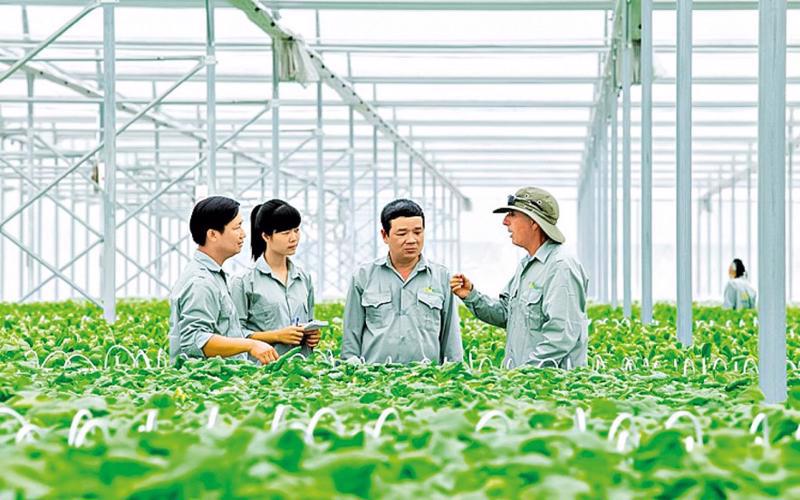Sustainable, green-driven growth is no longer merely a choice, it has become a global imperative. As climate change continues to reshape our world in increasingly tangible ways, nations across the globe are embracing the shift towards sustainability. While many have already taken the first steps and achieved early results, the pace of green transition needs to accelerate significantly to truly meet the demands of inclusive and long-term development.
At the ministerial-level discussions during the 4th Partnering for Green Growth and the Global Goals 2023 Summit (4th P4G Summit), hosted recently by Vietnam, leaders and experts came together to explore bold ideas and actionable solutions. Their focus was on unlocking key drivers that will enable both the global economy, and Vietnam in particular, to grow in a way that is not only robust but also resilient and sustainable for generations to come.
Unlocking green finance
To accelerate the construction of a sustainable global economy, the role of mobilizing sufficient and sustainable green investment capital is indispensable. In this context, the coordination in implementing a financial mobilization strategy for green growth, aligned with the structure of the global financial system, is crucial.
Speaking at the ministerial session entitled “Revitalizing and Unleashing Finance Strategy for Global Green Growth”, Ms. Rebeca Grynspan, Secretary-General of the United Nations Conference on Trade and Development (UNCTAD), said the global economy is undergoing a period of contradictions. While global assets have reached nearly $500 trillion, countries and territories are struggling to mobilize the $4 trillion needed to diversify economies towards sustainability. Every day, the global financial market handles over $10 trillion in funds, but only a very small proportion of this capital is directed to or derived from green projects.
Despite receiving limited investment resources, Ms. Grynspan expressed her admiration for the achievements of the global economic transformation toward sustainability. Notably, the global renewable energy market surpassed the $1 trillion mark in 2024, with projections to exceed $7 trillion by 2030. The electric vehicle and clean energy vehicle markets are also growing at double the rate every 18-24 months. Other sectors, such as sustainable technology, climate change adaptation, and the circular economy, have also seen significant growth in recent times. These figures highlight the potential profits, reaching trillions of dollars, from investing in green projects.
While the sustainable economy sectors have the potential for substantial returns, opportunities for green projects are mostly concentrated in developed countries. In contrast, despite being the most affected by climate change, developing nations, including China, only received 50 per cent of the total green energy investment in 2024. In Africa, home to 60 per cent of the world’s potential solar energy capacity, less than 2 per cent of total renewable energy investments are being directed there.
Even countries that supply the raw materials essential for global green growth have only received a small share of the profits from this investment wave. The Democratic Republic of the Congo, which supplies 70 per cent of the world’s cobalt demand, receives less than 3 per cent of the profits from the industry.
To ensure that capital reaches the right places at the right time, UNCTAD called for improvements in financial equity, particularly in developing nations.
Mr. Do Thanh Chung, Deputy Minister of Finance of Vietnam, reported positive results in the Vietnam’s green credit growth. Specifically, the country’s outstanding green credit balance grew eight-fold between 2015 and 2023, from VND71 trillion ($2.84 billion) to around VND564 trillion ($22.56 billion), representing 4.4 per cent of the total outstanding loans in the economy. These figures reflect the Vietnamese Government’s commitment and the entire political system’s determination to achieve green growth goals. However, there is still significant room for growth in Vietnam’s green finance sector.
Mr. Thomas Jacobs, Country Director of the International Finance Corporation (IFC) for Vietnam, Cambodia, and Laos, noted that Vietnam’s financial needs to achieve its net-zero emissions by 2050 roadmap are estimated at $368 billion. Despite rapid growth in green credit over recent years, it still accounts for less than 5 per cent of total loans, and the climate bond market has not yet fully developed, creating significant limitations in the current financial system. Vietnam needs to improve its legal regulations, enhance banking capacity, and promote innovative financial instruments such as blue bonds.
According to Mr. Chung, as part of the sustainable development process, it is essential to reposition the mission and role of national financial institutions globally. National financial institutions, in addition to strengthening their role in policy coordination, should be given a leading role in creating and driving legal frameworks that foster green project investments.
He also called on governments to empower their State financial institutions to develop and implement strong measures for the green finance market, including promoting green finance sectors, sustainable financial tools, and developing practical products. Policies supporting businesses involved in green projects, such as direct financial incentives, should be implemented to make these projects more attractive to both domestic and foreign investors. Additionally, delegates agreed that financial policy reforms should include a clear green finance classification system and the improvement of ESG (environmental, social, and governance) standards.
Speakers emphasized that a transparent and closely-monitored system would build investor trust. According to H.E Kees van Baar, Ambassador of the Netherlands to Vietnam, financial policy reforms, including tax incentives, adjusting credit limits, and exempting mandatory reserves for green credit, are vital measures to strengthen the green finance market.
Regarding the structure of the global financial system, countries agreed that strengthening discussions and close cooperation is essential. In this context, the needs and desires of developing countries must be heard.
Driving green innovation
Once the necessary capital is secured, the wave of sustainable development will open up a world of opportunity to transform and modernize global technological foundations. It will drive smarter, more innovative solutions that meet the needs of humanity while ensuring we do not deplete our precious natural resources.
During the ministerial session entitled “Game-Changing Technology for Green Transition and Sustainable Development in the Intelligent Age”, Minister of Science and Technology Nguyen Manh Hung highlighted that green development is a monumental step for humanity, especially as rising resource consumption continues to strain the environment. While this presents a significant challenge, the Minister is confident that human ingenuity will prevail in overcoming it.
“Green and sustainable development hinges on science, technology, innovation, and digital transformation,” he emphasized. “Vietnam views this as a strategic priority, evident in our decision to bring science, technology, innovation, and digital transformation under the same management body.” He explained further that green and digital are inseparable - green must be digital, and digital must be green. The digital world reduces material consumption, while digital transformation demands energy efficiency, especially as it consumes significant electricity.
Meanwhile, a representative from the Global Green Growth Institute (GGGI) said the rise of AI offers a powerful tool for policymakers, businesses, and organizations to gather and analyze data and predict future trends. According to Boston Consulting Group (BCG) research, AI-driven green solutions could reduce global greenhouse gas emissions by 5-10 per cent by 2030.
Mr. Katsume Yasushi, Japanese Parliamentary Vice-Minister of the Environment, revealed that Japan is leveraging AI to monitor pollution, climate change, and biodiversity loss.
In the Middle East, the United Arab Emirates (UAE) has embraced AI and digital transformation to tackle domestic energy security and build a circular economy. H.E. Bader Al Matrooshi, Ambassador of the UAE to Vietnam, explained that the country has created smart agricultural models suited to its environment, boosting agricultural productivity. A prime example is Bustanica, the world’s largest vertical hydroponic farm, which uses AI and machine learning to manage agriculture and carefully control water resources.
Delegates at the session agreed that for a developing country like Vietnam, harnessing AI could lead to a major breakthrough in optimizing resource use and reducing emissions. Additionally, attracting investment in green technology and fostering international collaboration will help create industries that promote sustainable growth in Vietnam, offering high-quality jobs and better incomes for workers.









 Google translate
Google translate